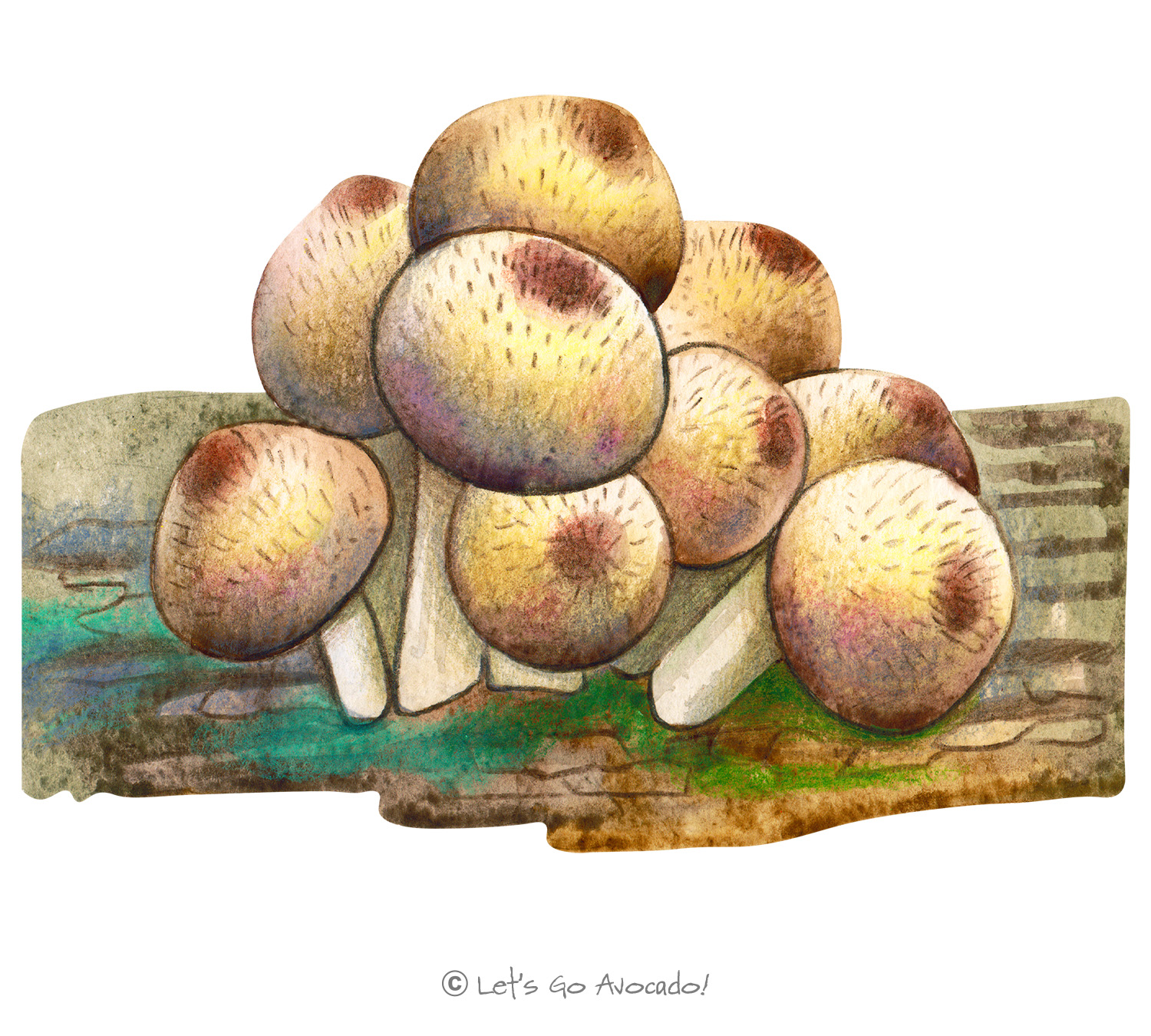

Pear Shaped Puffball
Gem-studded puffball, gemmed puffball, devil's snuff-box
Lycoperdon pyriforme
This page may contain affiliate links.
Read our disclosure and privacy policy here.
The Pear Shaped Puffball mushroom is a fascinating fungal species that aptly earns its name from its pear-like shape. These puffballs are known to mushroom enthusiasts not just for their distinctive appearance, but also for their method of spore dispersal, which results in a puff of spores when they are mature and disturbed.
Pear Shaped Puffball
Common Name
Pear Shaped Puffball
Other Names
Gem-studded puffball, gemmed puffball, devil’s snuff-box
Latin Name
Lycoperdon pyriforme
Distribution
This mushroom is widely distributed and can be found throughout North America, Europe, and other parts of the world.
Appearance
As its name suggests, the Pear Shaped Puffball mushroom has a pear-like or somewhat round shape. The outer surface is typically dotted with tiny, spine-like projections that can slough off, leaving a net-like pattern on the surface. The interior becomes filled with a mass of dry, powdery spores as it matures.
Size
Typically, it ranges from 1.5 to 5 cm in diameter.
Habitat
This puffball is saprobic, often found growing in clusters on decaying wood, such as logs, but can sometimes appear to be growing on the ground when the wood is buried.
Diet
Decomposer; it breaks down and derives nutrients from decaying organic matter, primarily wood.
Lifecycle
The Pear Shaped Puffball starts as a white, firm fruiting body. As it matures, the inside fills up with spores, turning into a powdery mass. When it reaches maturity, the top of the puffball will open or get ruptured, allowing the spores to be dispersed. The “puffing” action can be due to raindrops or physical disturbances, aiding in the spread of the spores.
Defense Mechanisms
The powdery spores can act as a deterrent to many herbivoresHerbivores are animals that eat plants as their main source of food. They are like the vegetarians of the animal kingdom. Just as you eat fruits, vegetables, and other plant-based foods, herbivores munch on leaves, flowers, grass, and other parts of plants., as they can be irritants when inhaled or ingested. The small, spine-like projections on the exterior can also deter some herbivores from eating them.
Ecological Importance
As saprobes, Pear Shaped Puffballs play an essential role in recycling dead organic matter in ecosystemsAn ecosystem is a community of living organisms, like insects and birds, and non-living components, like water and rocks, that interact with each other in a specific area. Learn More. They help decompose wood, returning vital nutrients to the soil and aiding in the natural decompositionDecomposition is a natural process that happens when living things, like plants, animals, or other organic matter, break down into simpler substances. It is a part of the circle of life and plays an essential role in recycling nutrients back into the environment. Learn More process.
ConservationThe act of protecting and preserving natural resources and the environment. Conservation efforts are important to protect beavers and their habitats. Status
It is considered common in its natural habitat.

There’s a lot to explore right where we are, in our own neighborhoods and backyards! Join us while we get off the couch and explore the everyday wonders of nature, science, space, engineering, art, and anything else we stumble upon during on our adventures.







